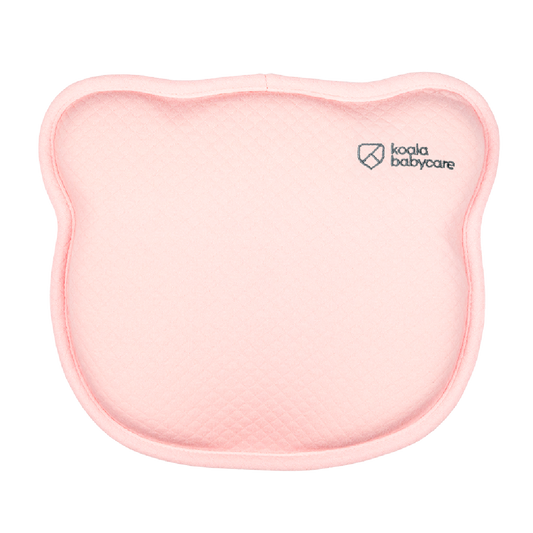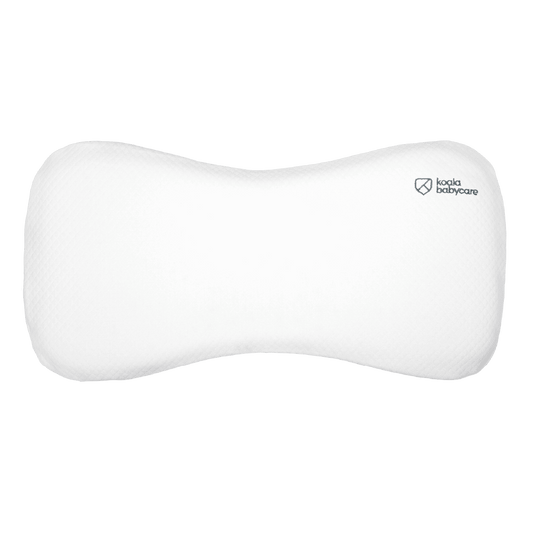Positional plagiocephaly, also commonly known as flat head syndrome, should not be overlooked, as in more severe cases, it can impact a baby's development. What are the consequences of untreated plagiocephaly? Read on.
What is Plagiocephaly and what causes it?
It’s not uncommon for newborn babies to have flat spots on one side or at the back of their heads, especially in recent years, when there has been a notable rise (48%) in the number of plagiocephaly cases (according to data collected by the American Academy of Paediatrics “Observations on a recent increase in plagiocephaly without synostosis”).
Head shape deformities in infants can be caused by factors linked to the prenatal stage, the birth itself, or to various other aspects from an infant’s first few months of life.
Newborn babies' skulls are soft and malleable to allow their head to move easier through the birth canal and to allow it to expand to accommodate the brain’s rapid development, which quadruples in size during the first two years of life.
At birth, a newborn baby’s skull bones are not welded together yet but joined by fibrous tissue, the famous fontanelles (commonly known as soft spots). Gradually, these fontanelles close over, and fibrous tissue is replaced with bone.
This explains why lateral or posterior flattening of an infant’s skull is so common: by spending a lot of time lying on their backs (whilst sleeping and when awake), a young baby’s soft, malleable head tends to flatten.
It's no coincidence that cases of plagiocephaly have risen sharply since WHO guidelines recommend that infants should always lie on their backs in order to reduce cot deaths.
WHO guidelines have reduced cot deaths by 60 per cent, so it’s of paramount importance that parents consult them and follow them carefully. However, it’s also good to take preventative steps against the onset of plagiocephaly or to treat it, if already present.
We’re talking about small yet important steps; you can learn more about these measures by reading 10 Tips to prevent and improve Positional Plagiocephaly during the first few months of life by Dr Bonanno.
Brachycephaly or Plagiocephaly? The difference between the two
Before continuing, let’s clarify the difference between Plagiocephaly and Brachycephaly. Both refer to skull deformities and may even have the same root cause, the difference being in the nature of the flattening spot itself.
Technically, we speak of positional brachycephaly when flattening occurs at the back of the head, which, upon observation, appears shorter than normal. The word Brachycephaly, in fact, derives from Greek and literally means ‘short head’.
Plagiocephaly, which is Greek for 'oblique head', on the other hand, refers to a lateral flattening of the skull. Plagiocephaly is more common given that infants generally tend to turn their head to their preferred side. This may be influenced by the position of their crib in relation to where mum and dad sleep, or the side they are held on.
It’s often associated with postural torticollis, which can aggravate the condition further and cause complications.
Plagiocephaly: up to what age does it affect children?
Positional Plagiocephaly is believed to resolve itself spontaneously within the first 2 years of a baby’s life. However, in reality, you shouldn’t underestimate it by thinking that it will correct itself on its own with time and that you don’t need to do anything.
In more severe forms, in fact, cranial deformities can lead to permanent asymmetries and may be associated with delays in a child’s development.
The best results are obtained by intervening with osteopathic treatment during the first six months of an infant’s life and also by taking certain steps that Dr. Bonanno discusses in 10 Tips to prevent and improve positional plagiocephaly in the first few months of life.
Among the remedies listed by Dr Bonanno you’ll find Koala Perfect Head baby pillow range, designed in conjunction with doctors and field professionals in order to prevent and treat flat head syndrome.
Plagiocephaly consequences for infants
If your baby has a flattened area on their head, either at the back or on the side, it is advisable to consult your doctor as soon as possible. They will be able to provide you with all the information you need to prevent plagiocephaly from worsening and to help your baby's little head become round again and so as not to leave flat head syndrome untreated.
In milder forms, plagiocephaly doesn’t affect a child's health, while in more severe forms it has been found to be associated with:
- bilateral breastfeeding and sucking-related issues
- sleep disorders
- fussiness
- difficulty turning the head on both sides
- occlusal, masticatory, and dental morphology issues
- torticollis in newborns or problems with the development of the spine, such as scoliosis and rotoscoliosis
- delays in motor development in infants who’ve spent long periods of time lying on their backs and who haven’t done much tummy time. For example, it may impact development of body strength and muscle tone
Aesthetic factors also need to be taken into consideration, i.e., the possibility of permanent asymmetry to the shape of a child’s head.
An excellent way to prevent or fix plagiocephaly in infants is by using a flat head pillow from Koala Perfect Head range: these are classified as medical devices and designed to prevent and treat flat head syndrome in a variety of different situations, from pram to playtime, from crib to breastfeeding.
The information contained on this Site is purely of an informative nature and does not replace any diagnosis or treatment advice received from a doctor. We recommend that you always seek advice from your family doctor and / or specialists.










